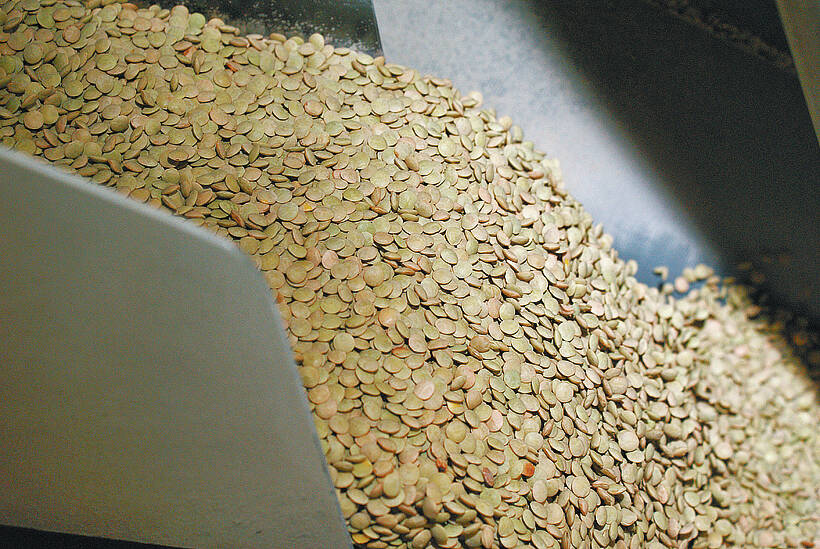ROCKY MOUNTAIN HOUSE, Alta. — Canadian cow-calf producers can expect profitability to continue for a couple more years, but 2015 was probably the peak of the market in the current cattle cycle.
Canada enjoyed a longer stretch of record high prices than the United States, which probably saw its peak last year, said market analyst Anne Wasko of Gateway Livestock.
Volatility is the name of the game.
“The market itself has changed, not just on the cattle side but all commodities, and the global influence is part of that,” she told a cattlemen’s day held in Rocky Mountain House Nov. 19.
Read Also

Green lentil market oversupplied
Farmers in Western Canada can expect price pressure on their new crop of green lentils, as the available supplies among the world’s major lentil-growing nations increase significantly.
Producers need to watch for opportunities to capture the best prices in an uncertain environment. Those who control costs can expect to remain profitable for the next few years.
“Let information drive your decisions,” she said.
Wide price fluctuations are expected to continue into next year, when the range will be at least $40 per hundredweight on feeders, while 850 pound steers could trend lower.
Calf prices increased 53 percent last year, which was unusual. However, this kind of wild activity has been noted three times since the early 1970s.
Finished cattle averaged $187 per cwt. this year, but the range was $160 to $200 per cwt. Calf prices will average $300 per cwt. but ranged $278 to $330 per cwt., depending when they were sold. This could earn producers a $200 to $300 per head profit.
Cows traded from $111 to $151 per cwt., but these prices are starting to fall back.
The Canadian dollar declined 13 percent from last year and is now around 75 cents.
However, the lower loonie has not spurred American buyer interest. Exports of all classes of live cattle are down for the second half of this year.
“The dollar does not change the export volume. What it does is changes our price,” she said.
More cattle are staying in Canada for processing.
Feeder cattle exports to the U.S. are down about 25 percent lower and slaughter cattle are down about 33 percent.
Canadian packers offered stronger basis contracts to feedlots to keep cattle in Canada and maintain plant capacity.
Canadian beef exports are up one percent from last year and beef imports are down. However, more lean trim is coming in from Australia and New Zealand.
The strong American dollar has affected that country’s exports, with beef sales down 13 percent from last year. Its imports are up 17 percent with lean grinding product coming from Australia, New Zealand and South America.
Canadian fed cash cattle usually trade at a discount to the U.S. market, but the first half of this year saw premiums of $5 to $15 over the U.S.
“Even today we have got basis levels that are par,” Wasko said.
North America’s feeding sector is suffering.
American cattle feeders have been losing money all year and could post losses of $400 per head. It is an extreme swing in a short period, affecting what they are willing to pay for feeder calves.
Alberta feedlots had a lengthy period of profitability from the fall of 2013 to the first half of this year, but that has changed now.
“Feeding margins at the feedlot level have gone from one of the best and longest feedlot profitability that we have seen in Alberta to one of the worst in a heartbeat,” she said.
Break-evens have been increasing and were around $2 per pound.
“They have corrected their break-even by $15 per cwt. in the last two months to get control of this lost margin they are in right now,” she said.
Feed costs can be worrisome when calculating break-evens.
U.S. corn supplies are high, so it should be priced around $3.50 a bushel next year. Barley prices are still higher than they were last year.
“Normally that would tell me feeder cattle are going to leave (exported south), but they aren’t,” she said.
The market has been bolstered with strong demand for beef. It has remained better than expected, but retail prices should start to slide.
Retail prices in September rose 12 percent from last year. The U.S. retail price is the same as last year but is expected to finish lower than last year. Wholesale beef in the U.S. has fallen 20 percent since the spring highs.















